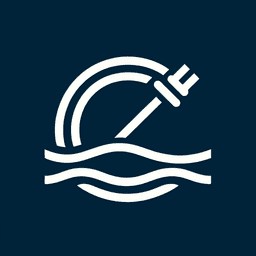
Cable Run: Definition, Examples, and Best Practices
January 16, 2025
Cable Run
A "Cable Run" in maritime contexts refers to the path or route taken by cables and wiring throughout a ship or marine vessel. This term is crucial for sailors and maritime professionals as it involves the planning and installation of electrical and communication systems on board.
Understanding cable runs is essential for ensuring the safety and efficiency of a vessel's operations. Properly planned cable runs help in minimizing electromagnetic interference, reducing the risk of electrical fires, and ensuring that all systems are easily accessible for maintenance and repairs.
In the design phase of a ship, engineers meticulously plan cable runs to optimize space and functionality. They consider factors such as the shortest possible routes, the need to avoid areas prone to water ingress, and the separation of power and data cables to prevent interference.
For sailors, knowledge of cable runs is important for troubleshooting electrical issues and performing routine maintenance. Familiarity with the ship's cable layout can significantly reduce downtime and enhance the vessel's operational readiness.
Overall, cable runs are a fundamental aspect of maritime engineering, contributing to the safe and efficient operation of ships and other marine vessels.
Cable Run in Maritime Applications
Cable runs are essential in maritime settings, providing the necessary pathways for electrical and communication cables throughout a vessel. Understanding the intricacies of cable runs can significantly enhance the efficiency and safety of maritime operations.
Common Questions About Cable Runs
What is a cable run?
A cable run refers to the path or route taken by cables to connect different parts of a ship. This includes the physical layout and the method of securing cables to prevent damage and ensure functionality.
How do you plan a cable run on a ship?
Planning a cable run involves assessing the ship's layout, determining the shortest and safest routes, and considering factors such as interference, accessibility, and protection from environmental hazards. Proper planning ensures that cables are not only functional but also safe from potential damage.
What materials are used in maritime cable runs?
Materials used in maritime cable runs must be resistant to corrosion, water, and other environmental factors. Common materials include marine-grade stainless steel, PVC coatings, and specialized cable trays designed for harsh conditions.
Why is cable management important on ships?
Cable management is crucial to prevent hazards such as electrical fires, interference with ship operations, and damage to cables. Proper management also facilitates maintenance and upgrades, ensuring the ship's systems remain operational and efficient.
Conclusion
Effective cable runs are vital for the safety and efficiency of maritime operations. By understanding and implementing best practices in cable management, maritime professionals can ensure reliable and safe operations at sea.




